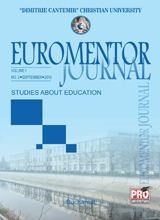BRIEF OVERVIEW OF INTERTEXTUALITY
BRIEF OVERVIEW OF INTERTEXTUALITY
Author(s): Mirela RaduSubject(s): Aesthetics, Hermeneutics, Theory of Literature, Sociology of Literature
Published by: Editura Pro Universitaria
Keywords: Intertextuality; literature; aesthetics; transtextuality; discourse; hermeneutics;
Summary/Abstract: The notion of intertextuality was launched by Julia Kristeva in 1966, referring to the creation of Mikhail Bahtin, in a literature seminar moderated by Roland Barthes. The notion fits well with the textualist concerns of the group of researchers around Tel Quel magazine. Bakhtin considers that, in Dostoevsky's work, there are several discursive instances (voices that communicate with each other), interventions that, through questions and answers, create plurivocity (polyphony). Inspired by Bahtin, Kristeva concludes that poetic language becomes a dialogue of texts, a dialogue between the subject of writing, the receiver and the text. Julia Kristeva believes that each text represents a "plurality of texts", any text absorbing and transforming other texts as "a mosaic of quotes" and this is called intertextuality (the way the text reads history and is inserted into it). Intertextuality is always general and implicit, coextensive with discourse. "The concept of intertextuality replaces that of intersubjectivity… A text is always inspired by other texts.
Journal: Euromentor Journal - Studies about education
- Issue Year: XIII/2022
- Issue No: 3
- Page Range: 70-80
- Page Count: 11
- Language: English

